उर्वशी, उरवशी उरु-अशी, 21 परिभाषाएँ
परिचय:
"भारतीय वैदिक तथा पौराणिक सन्दर्भों में विशेषत: , संस्कृत भाषा में लिखित पुराणों तथा, जैन धर्म , में उर्वशी का कुछ न कुछ उर्वरता से सम्बन्ध होता है। यदि आप इस शब्द का सटीक अर्थ, इतिहास, व्युत्पत्ति या अंग्रेजी अनुवाद जानना चाहते हैं तो इस पोष्ट पर विवरण देखें।
छवियां (फोटो गैलरी)
वैष्णववाद ( भागवतधर्म-धर्म)
उर्वशी (उरवशी).—स्वर्गीय अप्सराओं में से एक जो सौन्दर्य की अधिष्ठात्र देवी हुई। जब अर्जुन स्वर्ग में थे तो उर्वशी ने अर्जुन की परीक्षा के लिए उसे लुभाने- बहकाने की कोशिश की। अर्जुन ने उर्वशी के प्रति श्रद्धा रखते हुए वह उसे कुरु वंश की माता मानता था क्योंकि उसने पुरुरवा को अपना पति बना लिया था।
अर्जुन को कुछ अप्सराओं की अवहेलना के कारण अर्जुन को एक वर्ष के लिए नपुंसक बनने का शाप प्राप्त हुआ।
इस शाप का प्रभाव विराट राज्य में पांडवों के निर्वासन के अंतिम वर्ष के दौरान हुआ; स्वर्गीय ग्रहों की एक महिला जो राजा पुरुरवा पर मोहित हो गई।
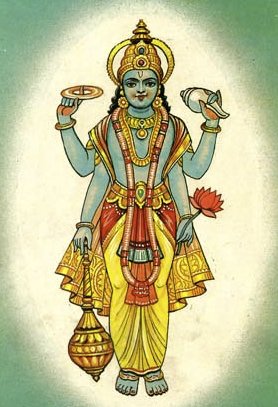
(वैष्णववाद) विष्णु को सर्वोच्च भगवान के रूप में पूजा करने की हिंदू धर्म की परंपरा का प्रतिनिधित्व करता है। शक्तिवाद और शैववाद परंपराओं के समान, वैष्णववाद भी एक व्यक्तिगत आंदोलन के रूप में विकसित हुआ, जो दशावतार ('विष्णु के दस अवतार') के प्रदर्शन के लिए प्रसिद्ध है।
पुराण और इतिहास (महाकाव्य इतिहास)
स्रोत : बुद्धि पुस्तकालय: वराह-पुराणवाराहपुराण अध्याय 91 के अनुसार, उर्वशी (उरवशी) काले घुंघराले बालों और लाल होंठों वाली एक खूबसूरत ( कन्या ) का नाम है। उर्वशी (और अन्य असंख्य महिलाएं) वैष्णवी के उत्तेजना से उत्पन्न हुई थीं, जब वह विशाला में तपस्या कर रही थीं। इन युवा महिलाओं के लिए, वैष्णवी ने देवीपुरा शहर का निर्माण किया, जिसमें सुनहरी बालकनी, क्रिस्टल सीढ़ियाँ और पानी के फव्वारे, रत्नजड़ित खिड़कियों और बगीचों वाली कई हवेलियाँ थीं।
वैष्णवी त्रिकाल का रूप है जिसका लाल शरीर विष्णु की ऊर्जा का प्रतिनिधित्व करता है। त्रिकला ब्रह्मा, विष्णु और महेश्वर (शिव) के संयुक्त रूप से उत्पन्न देवी का नाम है।
The Varāhapurāṇa is categorised as a Mahāpurāṇa, and was originally composed of 24,000 metrical verses, possibly originating from before the 10th century. It is composed of two parts and Sūta is the main narrator.
Source: archive.org: The Garuda puranamPuraravā (the son of Budha) begat on the nymph Urvasi six sons who were named Śrutātmaka, Viśvāvasu, Śatāyu, Āyu, Dhīmān, and Amāvasu.
Source: archive.org: Puranic Encyclopedia1) Urvaśī (उर्वशी).—A famous celestial damsel. (See full article at Story of Urvaśī from the Puranic encyclopaedia by Vettam Mani)
2) Urvaśī (उर्वशी).—Another name of Gaṅgā. As she sat on the Ūru (thigh) of Bhagīratha, Gaṅgā got the name Urvaśī. (Mahābhārata Droṇa Parva, Chapter 60, Stanza 6).
Source: Cologne Digital Sanskrit Dictionaries: The Purana Index1a) Urvaśī (उर्वशी).—An apsaras born of Nārāyaṇa; worshipped for success in love affairs.1 While she was plucking flowers in Badari āśrama Mitra and Varuṇa saw her, when she gave birth to Agastya and Vasiṣṭha.2 Satyadhṛti saw her, and she was mother of Śaradvata.3 Heard of the beauty of Purūravas from Nārada, when she came to the earth due to a curse of Mitra and Varuṇa, and gave enjoyment to him so long as he satisfied her two conditions—keeping her two sheep safe, and not showing himself naked before her except in sexual intercourse. When after 64 years she saw him naked one day, she left him. He looked for her and saw her at the R. Sarasvati playing with her friends. At his request she promised a day's enjoyment with him every year. On her advice he prayed to Gandharvas, and got an Agnisthāli. Mother of six sons by Purūravas.4 Returned to Heaven.5 The Goddess enshrined at Badari.6 When she danced before Indra, she forgot her abhinaya and was cursed by Bharata to become an invisible creeper for 55 years on the earth. During that time Purūravas was in the guise of Paiśāca. After the lapse of the period she bore him 8 sons.7 In the sabhā of Hiraṇyakaśipu.8 Mother of six sons by Aila.9 Also ūrvaśī (s.v.).
1b) The Apsaras presiding over the month of saha.1 With the sun in the hemanta;2 in the sun's chariot in the mārgaśīrṣa month;3 a brahmavādinī.4
1c) An Ābhīra kanyā who observed the bhīmadvādaśī, and became Urvaśī.*
2) Ūrvaśī (ऊर्वशी).—Born out of the thigh of Nārāyaṇa. (See urvaśī).*
Source: JatLand: List of Mahabharata people and placesUrvaśī (उर्वशी) refers to the name of a Lady mentioned in the Mahābhārata (cf. I.70.21). Note: The Mahābhārata (mentioning Urvaśī) is a Sanskrit epic poem consisting of 100,000 ślokas (metrical verses) and is over 2000 years old.
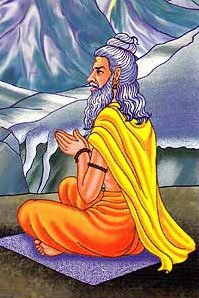
The Purana (पुराण, purāṇas) refers to Sanskrit literature preserving ancient India’s vast cultural history, including historical legends, religious ceremonies, various arts and sciences. The eighteen mahapuranas total over 400,000 shlokas (metrical couplets) and date to at least several centuries BCE.
Kavya (poetry)
Source: Wisdom Library: KathāsaritsāgaraUrvaśī (उर्वशी) is the name of an apsaras (heavenly nymp) whose story is told in the “story of Urvaśī”, according to the Kathāsaritsāgara, chapter 17. Accordingly, when king Purūravas (a devoted worshipper of Viṣṇu) was sauntering in the Nandana garden he crossed paths with Urvaśī and they instantly fell in love.
The Kathāsaritsāgara (‘ocean of streams of story’), mentioning Urvaśī, is a famous Sanskrit epic story revolving around prince Naravāhanadatta and his quest to become the emperor of the vidyādharas (celestial beings). The work is said to have been an adaptation of Guṇāḍhya’s Bṛhatkathā consisting of 100,000 verses, which in turn is part of a larger work containing 700,000 verses.
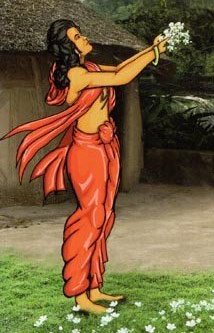
Kavya (काव्य, kavya) refers to Sanskrit poetry, a popular ancient Indian tradition of literature. There have been many Sanskrit poets over the ages, hailing from ancient India and beyond. This topic includes mahakavya, or ‘epic poetry’ and natya, or ‘dramatic poetry’.
Chandas (prosody, study of Sanskrit metres)
Source: Shodhganga: a concise history of Sanskrit Chanda literatureUrvaśī (उर्वशी) refers to one of the 135 metres (chandas) mentioned by Nañjuṇḍa (1794-1868 C.E.) in his Vṛttaratnāvalī. Nañjuṇḍa was a poet of both Kannada and Sanskrit literature flourished in the court of the famous Kṛṣṇarāja Woḍeyar of Mysore. He introduces the names of these metres (e.g., Urvaśī) in 20 verses.
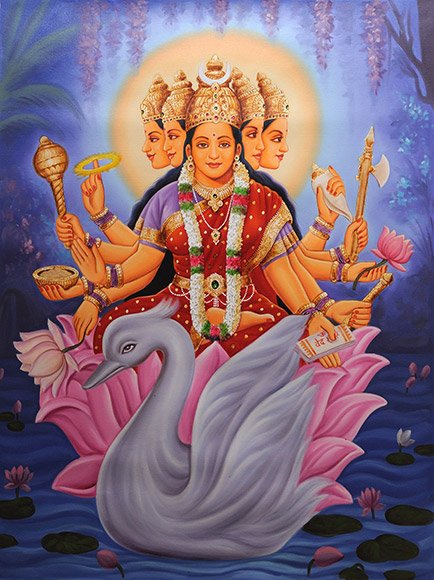
Chandas (छन्दस्) refers to Sanskrit prosody and represents one of the six Vedangas (auxiliary disciplines belonging to the study of the Vedas). The science of prosody (chandas-shastra) focusses on the study of the poetic meters such as the commonly known twenty-six metres mentioned by Pingalas.
General definition (in Hinduism)
Source: Apam Napat: Indian MythologyUrvashi is an Apsara in the court of Indra. Once, the primordial twin sages Nara and Naryana were performing a particularly severe penance. As was his wont, Indra feared for his crown and sent his divine dancers, the Apsaras, to disrupt this penance. Much angered, the sages struck their thighs, and from thence was born Urvashi, who was more beautiful than the other Apsaras. (In Sanskrit, Uru means 'thigh'). Seeing her divine beauty, the other dancers ran away in shame. Indra apologized for his effrontery and the sages pardoned him. They also sent Urvashi to be a dancer in his court. This story is told in more detail in 'Birth of Urvashi'.
Source: WikiPedia: HinduismUrvashi is an Apsara (nymph) in Hindu legend. She was a celestial maiden in Indra's court and was considered the most beautiful of all the Apsaras. She became the wife of king Pururavas (Purūrávas, from purū+rávas "crying much or loudly"), an ancient chief of the lunar race. ShBr 11.5.1, and treated in Kalidasa’s drama Vikramōrvaśīyam.
Birth: There are many legends about the birth of Urvashi but the following one is most prevalent. Once the revered sages Nara-narayana was meditating in the holy shrine of Badrinath Temple situated in the Himalayas. Indra, the king of the Gods, did not want the sage to acquire divine powers through meditation and sent two apsaras to distract him. The sage struck his thigh and created a woman so beautiful that Indra’s apsaras were left matchless. This was Urvashi, named from ur, the Sanskrit word for thigh. After his meditation was complete the sage gifted Urvashi to Indra, and she occupied the pride of place in Indra’s court.
etymology: Urvashi (Urvaśī, from Uras "heart" + Vashi "one who controls", "one who controls the heart") Monier Monier-Williams proposes a different etymology in which the name means "widely pervasive," and suggests that in its first appearances in Vedic texts it is a name for the dawn goddess.
In Jainism
General definition (in Jainism)
Source: archive.org: TrisastisalakapurusacaritraUrvaśī (उर्वशी) is the name of an Apsaras, instructed by Śakra to help in the preparations of Ṛṣabha’s wedding-preparations, according to chapter 1.2 [ādīśvara-caritra] of Hemacandra’s 11th century Triṣaṣṭiśalākāpuruṣacaritra (“lives of the 63 illustrious persons”): a Sanskrit epic poem narrating the history and legends of sixty-three important persons in Jainism.
Accordingly,
“[...] Then having ascertained the Lord’s purpose, Purandara at once summoned gods for the tasks of the wedding-preparations.—‘[...] O Lambhā, make the wreaths; prepare the dūrvā-grass, Urvaśī; Ghṛtācī, bring the ghee, curd, etc., for the groom’s reception. [...]’. From the bustling of the Apsarases instructing each other in this way, and frequently calling names, a mighty tumult arose”.

Jainism is an Indian religion of Dharma whose doctrine revolves around harmlessness (ahimsa) towards every living being. The two major branches (Digambara and Svetambara) of Jainism stimulate self-control (or, shramana, ‘self-reliance’) and spiritual development through a path of peace for the soul to progess to the ultimate goal.
Languages of India and abroad
Sanskrit dictionary
Source: DDSA: The practical Sanskrit-English dictionaryUrvaśī (उर्वशी).—[urūn mahato'pi aśnute vaśīkaroti, uru-aś-ka gaurā° ṅīṣ Tv.]
1) Name of a famous Apsaras or nymph of Indra's heaven who became the wife of Purūravas. [Urvaśī is frequently mentioned in the Ṛigveda; at her sight the seed of Mitra and Varuṇa fell down, from which arose Agastya and Vaśiṣṭa; (see Agastya). Being cursed by Mitra and Varuṇa she came down to the world of mortals, and became the wife of Purūravas, whom she chanced to see while descending, and who made a very favourable impression upon her mind. She lived with him for some time, and went up to heaven at the expiration of her curse. Purūravas was sorely grieved at her loss, but succeeded in securing her company once more. She bore him a son named Āyus, and then left him forever. The account given in the Vikramorvaśīyam differs in many respects, where Indra is represented to have favoured Purūravas with her lifelong company though he had himself cursed her. Mythologically she is said to have sprung from the thigh of the sage Nārāyaṇa, q. v.] उर्वशी वै रुपिण्यप्सरसाम् (urvaśī vai rupiṇyapsarasām) Mahābhārata 5.2.95; मर्त्तासश्चिदुर्वशीरकृप्रन् (marttāsaścidurvaśīrakṛpran) Av. 18.3.23; स्त्रीरत्नेषु ममोर्वशी प्रियतमा यूथे तवेयं वशा (strīratneṣu mamorvaśī priyatamā yūthe taveyaṃ vaśā) V.4.47.
2) Wish, ardent desire.
Source: Cologne Digital Sanskrit Dictionaries: Shabda-Sagara Sanskrit-English DictionaryUrvaśī (उर्वशी) or Urvvaśī.—f. (-śī) The name of one of the courtezans of Swarga or Indra'S heaven. E. uru great, vaś to tame, ac and ṅīṣ affixes; also urvasī and ūrvasī.
--- OR ---
Ūrvasī (ऊर्वसी) or Ūrvvasī.—f. (-sī) A nymph of Swarga: see urvaśī. Also written ūrvaśī.
Source: Cologne Digital Sanskrit Dictionaries: Benfey Sanskrit-English DictionaryUrvaśī (उर्वशी).—f. The name of an Apsaras, [Vikramorvaśī, (ed. Bollensen.)] [distich] 110, etc.
Source: Cologne Digital Sanskrit Dictionaries: Cappeller Sanskrit-English DictionaryUrvaśī (उर्वशी).—[feminine] ardour, wish, desire; [Name] of an Apsaras.
Source: Cologne Digital Sanskrit Dictionaries: Monier-Williams Sanskrit-English Dictionary1) Urvaśī (उर्वशी):—f. ([from] uru and √1. aś, ‘to pervade’ See M.M., Chips, vol. ii, p.99), ‘widely extending’, Name of the dawn (personified as an Apsaras or heavenly nymph who became the wife of Purū-ravas), [Ṛg-veda; Atharva-veda xviii, 3, 23; Vājasaneyi-saṃhitā; Śatapatha-brāhmaṇa; Vikramorvaśī] etc.
2) Name of a river, [Mahābhārata xii.]
3) Ūrvaśī (ऊर्वशी):—f. [varia lectio] for urvaśī q.v.
Source: Cologne Digital Sanskrit Dictionaries: Yates Sanskrit-English Dictionary1) Urvaśī (उर्वशी):—(śī) 3. f. A name of one of the celestial courtezans.
2) Ūrvasī (ऊर्वसी):—(sī) 3. f. A nymph of Paradise.
Source: DDSA: Paia-sadda-mahannavo; a comprehensive Prakrit Hindi dictionary (S)Urvaśī (उर्वशी) in the Sanskrit language is related to the Prakrit word: Uvvasī.
[Sanskrit to German]
Sanskrit, also spelled संस्कृतम् (saṃskṛtam), is an ancient language of India commonly seen as the grandmother of the Indo-European language family (even English!). Closely allied with Prakrit and Pali, Sanskrit is more exhaustive in both grammar and terms and has the most extensive collection of literature in the world, greatly surpassing its sister-languages Greek and Latin.
Kannada-English dictionary
Source: Alar: Kannada-English corpusUrvasi (ಉರ್ವಸಿ):—[noun] (myth.) a famous and most beautiful nymph in the court of Indra, the Lord of gods.
--- OR ---
Ūrvaśi (ಊರ್ವಶಿ):—
1) [noun] (myth.) a nymph, born from the thighs of sage Nārāyaṇa, known for her exquisite beauty.
2) [noun] (fig.) a very beautiful woman.
Kannada is a Dravidian language (as opposed to the Indo-European language family) mainly spoken in the southwestern region of India.
See also (Relevant definitions)
Starts with: Urvashinamamala, Urvashipulina, Urvashiramana, Urvashisahaya, Urvashisuta, Urvashitirtha, Urvashivallabha.
Full-text (+126): Urvashiramana, Aurvasheya, Urvashivallabha, Urvvashi, Aurvasha, Raya, Urvashitirtha, Satyayu, Pururava, Urvashinamamala, Urvashisahaya, Dridhayu, Srutayu, Vikramorvashi, Urvvashiramana, Pururavas, Apsaras, Mitravaruna, Narayana, Ayu.
Relevant text
Search found 55 books and stories containing Urvashi, Urvaśī, Ūrvaśī, Urvasi, Ūrvasī, Ūrvaśi, Urvsi; (plurals include: Urvashis, Urvaśīs, Ūrvaśīs, Urvasis, Ūrvasīs, Ūrvaśis, Urvsis). You can also click to the full overview containing English textual excerpts. Below are direct links for the most relevant articles:
Rig Veda (translation and commentary) (by H. H. Wilson)
Vishnudharmottara Purana (Art and Architecture) (by Bhagyashree Sarma)
3. The Story Behind the Origin of Painting < [Chapter 5 - Painting and Image Making]
2. The Viṣṇudharmottara-purāṇa: An Introductory Note < [Chapter 1 - Introduction]
List of Mahabharata people and places (by Laxman Burdak)
Cosmetics, Costumes and Ornaments in Ancient India (by Remadevi. O.)
2.14. Dress for Stage performance < [Chapter 2 - Costumes]
The Gautami Mahatmya (by G. P. Bhatt)
Chapter 101 - Urvaśītīrtha and other Holy Centres
Chapter 31 - Sarasvatī-saṅgama Tīrtha
Chandra < [Fourth Section]
Related products
हिंदू धर्म का एक संक्षिप्त विश्वकोश
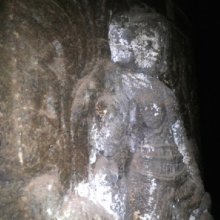
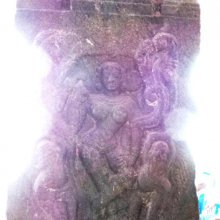
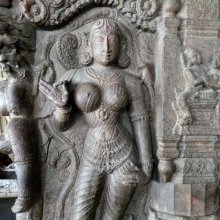
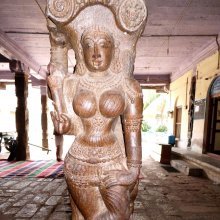

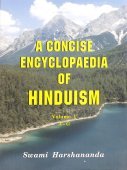
कोई टिप्पणी नहीं:
एक टिप्पणी भेजें